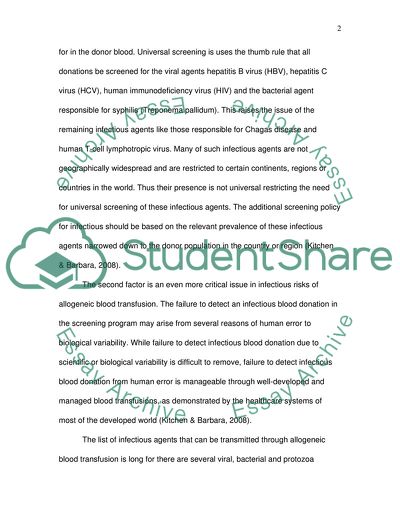Cite this document
(Allogeneic Blood Transfusions Assignment Example | Topics and Well Written Essays - 1500 words, n.d.)
Allogeneic Blood Transfusions Assignment Example | Topics and Well Written Essays - 1500 words. Retrieved from https://studentshare.org/medical-science/1731947-risks-of-allogenic-blood-transfusions
Allogeneic Blood Transfusions Assignment Example | Topics and Well Written Essays - 1500 words. Retrieved from https://studentshare.org/medical-science/1731947-risks-of-allogenic-blood-transfusions
(Allogeneic Blood Transfusions Assignment Example | Topics and Well Written Essays - 1500 Words)
Allogeneic Blood Transfusions Assignment Example | Topics and Well Written Essays - 1500 Words. https://studentshare.org/medical-science/1731947-risks-of-allogenic-blood-transfusions.
Allogeneic Blood Transfusions Assignment Example | Topics and Well Written Essays - 1500 Words. https://studentshare.org/medical-science/1731947-risks-of-allogenic-blood-transfusions.
“Allogeneic Blood Transfusions Assignment Example | Topics and Well Written Essays - 1500 Words”, n.d. https://studentshare.org/medical-science/1731947-risks-of-allogenic-blood-transfusions.


